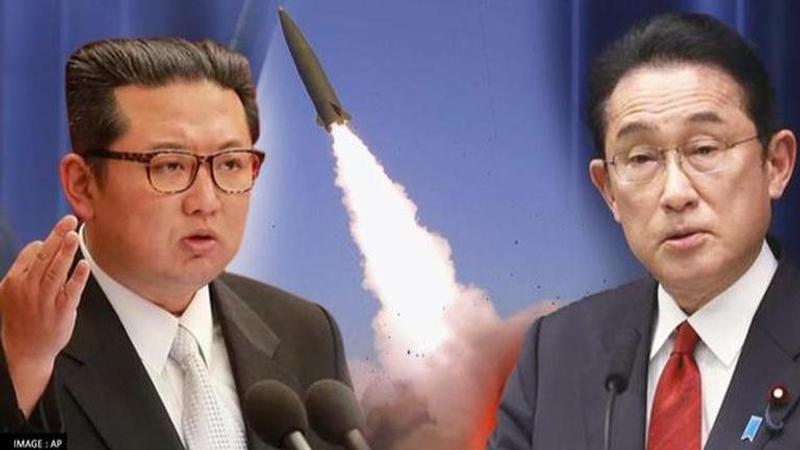Published 15:26 IST, April 18th 2022
Japan mulling to pursue enemy base strike capability amid North Korea's missile launches
As North Korean Leader continues to boost its nuclear fighting capability, Japan’s ruling party reportedly agreed to pursue "enemy base strike capability".

As North Korea's Supreme Leader Kim Jong-un continues with initiatives to bolster the country's nuclear arsenal, Japan’s ruling administration reportedly agreed to pursue "enemy base strike capability", NK News reported. According to the draft proposal, the country will introduce the enemy base strike capability that will not just target missile bases but also disable the command and control systems. However, it remains a politically sensitive matter in the country as Japan’s constitution limits the country to only self-defence and prohibits preemptive military actions. Any changes would mean an amendment to the 75-year-old constitution.
The panel will also look into possibly changing the wording "enemy strike capability," as sought by some of its members, in a way that would emphasise Japan's counteroffensive as being more of self-defence, according to a report by Kyodo News. Notably, the major development came as North Korea again fired a suspected ballistic missile toward the sea on March 25. According to South Korean military officials, the firing was apparently meant to extend its barrage of weapons trials that may culminate with a flight of its biggest-yet intercontinental ballistic missile.
Japan believes North Korea's weapon trials possibly involved ballistic missiles
Though South Korea’s Joint Chiefs of Staff did not confirm whether the test include a ballistic weapon or how far it flew, Japan’s Prime Minister’s Office and Defense Ministry believe the launch possibly involved a ballistic missile. Japan coast guard issued a serious warning for the vessels which were scheduled to pass nearby waters. Notably, the last launch was the 12th time when North Korea fired suspected artillery pieces into the sea in the past three months. Japanese Chief Cabinet Secretary Hirokazu Matsuno condemned the act and added that ballistic missiles were landed in waters outside Japan’s exclusive economic zone. According to Matsuno, the missile flew for around 30 minutes before landing in the waters.
Japanese PM directs officials to prepare for the worst situation
It is pertinent to mention here that the North has also tested a series of new missiles, including a purported hypersonic weapon and its first launch since 2017 of an intermediate-range missile potentially capable of reaching Guam, a key US military hub in the Pacific. Besides, it also conducted two medium-range tests near its capital area in recent weeks. Earlier on January 11, when North Korea's supreme leader Kim Jon-un fired the second blastic missile, the Japanese Prime Minister Fumio Kishida directed the concerned officials to strengthen monitoring of North Korea's military activities. He also directed the ministers and administrators to make the utmost steps to gather details on the blastoff while ensuring the safety of planes and vessels in and around Japan. Kishida also ordered to prepare their resources to avert an emergency-like situation, reported Kyodo News.
Image: AP
Updated 15:26 IST, April 18th 2022




